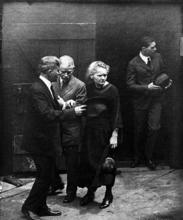By the end of World War I, Marie Curie was probably the most famous woman in the world. She had made a conscious decision, however, not to patent radium or its medical applications. As the price of radium escalated, she found that she did not have sufficient supplies for the radiochemical investigations that she wanted to undertake at the Institute of Radium in Paris.
As for the radium prepared by me out of the ore we managed to obtain in the first years of our work, I have given it all to my laboratory.
The price of radium is very high since it is found in minerals in very small quantities, and the profits of its manufacture have been great, as this substance is used to cure a number of diseases. So it is a fortune which we have sacrificed in renouncing the exploitation of our discovery, a fortune that could, after us, have gone to our children. But what is even more to be considered is the objection of our many friends, who have argued, not without reason, that if we had guaranteed our rights, we could have had the financial means of founding a satisfactory Institute of Radium, without experiencing any of the difficulties that have been such a handicap to both of us, and are still a handicap to me. Yet, I still believe that we have done right.
Marie Curie
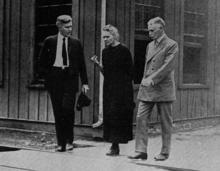
Her benefactress was an American woman, Mrs. W.B. Meloney. Mrs. Meloney launched a campaign to have the women of America contribute $100,000 to buy a gram of radium for presentation to Marie Curie for her use at the Institute of Radium.
Thus, in 1921 Marie Curie made her first visit to the United States accompanied by her two daughters Irène and Eve. Irène Curie's contributions to radium science will be mentioned later. The younger daughter, Eve, became an author, and her 1938 book,
Madame Curie: A Biography by Eve Curie, gives a thorough account of their trip to the United States. One stop was the Radium Refining Plant in Pittsburgh, where Marie Curie toured the chemical extraction facilities used to prepare radium for the U.S. market. Two views of Mme. Curie on the tour are shown here. The photograph on the right, from the Pittsburgh Sun, appeared at the National Bureau of Standards in Washington, probably about the time of her visit and hung for years in the Gamma Laboratory at the old Bureau site.
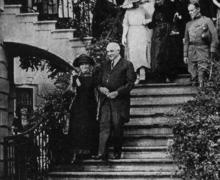
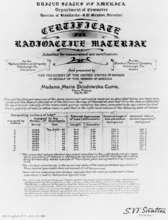
On May 20, 1921, Marie Curie visited the White House to receive the gift of the gram of radium from President Harding. The hazardous source itself was not brought to the ceremony. Instead, she was presented with a golden key to the coffer and a certificate. A replica of the coffer with dummy radium tubes was set on a table in the East Room of the White House during the ceremony. As the document indicates, it was a Certificate for Radioactive Material submitted for measurement and certification to the National Bureau of Standards. It was signed by Samuel W. Stratton, the Director of the Bureau, which was then as now a part of the Department of Commerce. This was not a standard source, but was intended for research purposes. Accordingly, it was subdivided into ten, hermetically sealed, glass tubes of about 100 mg each. The certification was presumably made by gamma-ray comparisons with the NBS radium standard (Secondary Standard No.6). "The residual uncertainty in the numerical value of the radium element equivalent of these several specimens does not exceed 0.7 of one percent."
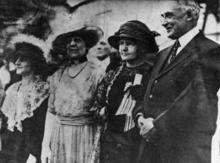
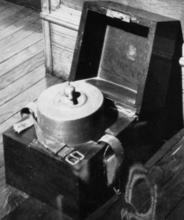
The radium was packaged for shipment at NBS and loaded on to the ship for the return trip to France. The box used for the shipment resides in the Curie Museum in Paris. Although Marie Curie's visit to the White House is recorded in great detail, very little is known about her contacts with the NBS. There is, however, her own report in the biography of Pierre Curie (p. 117). "I have visited with special interest the Bureau of Standards, a very important national institution in Washington for scientific measurements and for study connected with them. The tubes of radium presented to me were at the Bureau, whose officials had kindly offered to make measurements, and to take care of the packing and delivery to the ship."

